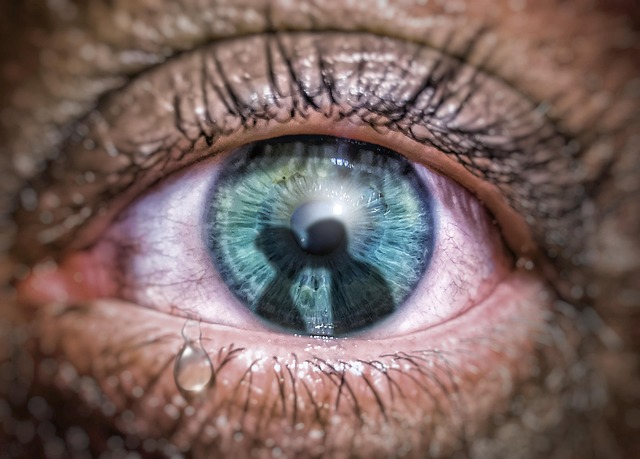PRP therapy for joint pain leverages a patient's own blood to stimulate healing and regeneration in damaged joints. This natural approach involves extracting, processing, and injecting platelet-rich plasma (PRP) into affected areas, alleviating pain, improving mobility, and slowing joint damage progression for various forms of arthritis and chronic conditions. Clinical studies show promising outcomes with improved joint function and reduced inflammation, making PRP a viable treatment option recommended by healthcare professionals.
“Discover how PRP therapy is revolutionizing the treatment of joint pain. This article delves into the promising world of platelet-rich plasma (PRP) as a powerful tool for alleviating discomfort in knees, hips, and other affected areas. We explore the scientific basis behind PRP’s effectiveness, backed by clinical studies showcasing impressive success rates. Learn what to expect during treatment and be inspired by patient testimonials, offering a glimmer of hope for those navigating chronic joint issues.”
Understanding PRP Therapy: Unlocking Joint Pain Relief
PRP therapy for joint pain has emerged as a promising treatment option, offering potential relief for individuals suffering from various forms of arthritis and chronic joint conditions. The concept is straightforward yet powerful: using a patient’s own blood, rich in growth factors, to stimulate healing and regeneration within their damaged joints. This natural approach leverages the body’s inherent ability to repair itself by enhancing the production of new, healthy cells and reducing inflammation.
By extracting a small amount of blood from the patient, processing it to concentrate platelet-rich plasma (PRP), and then injecting this concentrated solution back into the affected joint, PRP therapy can potentially alleviate pain, improve mobility, and slow down the progression of joint damage. Success stories are numerous, with many patients experiencing significant improvements in their quality of life after undergoing PRP treatments, highlighting the therapeutic potential of this innovative approach to managing joint pain.
Scientific Basis: How PRP Works for Joints
PRP (Platelet-Rich Plasma) therapy for joint pain has gained significant attention due to its scientific basis and promising outcomes. This innovative treatment harnesses the body’s natural healing mechanisms by utilizing a patient’s own blood to accelerate tissue repair and regeneration. PRP contains a high concentration of growth factors, which serve as chemical messengers that stimulate cells involved in healing, such as fibroblasts and chondrocytes.
When administered into affected joints, PRP promotes the formation of new, healthy tissue while also reducing inflammation. The growth factors in PRP help to enhance collagen production, a key component of connective tissues like cartilage, which is often compromised in cases of joint pain. This targeted approach makes PRP therapy an effective and minimally invasive option for managing various types of joint conditions, including arthritis and sports injuries.
Clinical Studies: Success Rates and Patient Testimonials
Clinical studies on PRP therapy for joint pain have shown promising results, with success rates varying across different trials. These studies involve rigorous methodologies to evaluate the efficacy and safety of PRP treatments. Many patients report significant improvements in joint mobility and reduced pain levels after receiving PRP injections. Patient testimonials highlight the positive impact of this therapy, describing increased comfort during daily activities and a noticeable decrease in inflammation.
The success stories from clinical trials contribute to growing evidence supporting PRP as a viable treatment option for managing joint pain. As more research emerges, healthcare professionals can make informed decisions when recommending PRP therapy to patients, offering them another tool in their arsenal to combat chronic joint discomfort.
Navigating Treatment: What to Expect During and After PRP
Navigating treatment with Platelet-Rich Plasma (PRP) therapy for joint pain involves understanding both the process and post-treatment expectations. During PRP therapy, a patient’s own blood is drawn, processed to concentrate platelets rich in growth factors, and then injected into the affected joint. This procedure typically takes around 30 minutes to an hour, during which patients may experience some mild discomfort or bruising at the injection site. After treatment, patients should avoid strenuous activity for a few days to allow the joint to heal.
In the days following PRP therapy, patients often notice improved joint mobility and reduced pain levels. However, it’s crucial to remember that results can vary from person to person, and multiple treatments may be necessary to achieve optimal relief. Healthcare providers will provide specific aftercare instructions, including recommendations for rest, ice, compression, and elevation (RICE), as well as any physical therapy exercises to aid in recovery. Regular follow-up appointments are essential to monitor progress and adjust treatment plans accordingly.
PRP therapy for joint pain has shown promising results, offering a non-invasive approach to managing chronic conditions. With its ability to harness the body’s natural healing mechanisms, PRP holds significant potential as an effective treatment option. Clinical studies and patient testimonials highlight its success in alleviating pain and improving mobility. Understanding the scientific basis behind PRP therapy empowers individuals to make informed decisions about their joint health, paving the way for a more proactive approach to managing pain.
